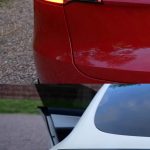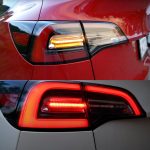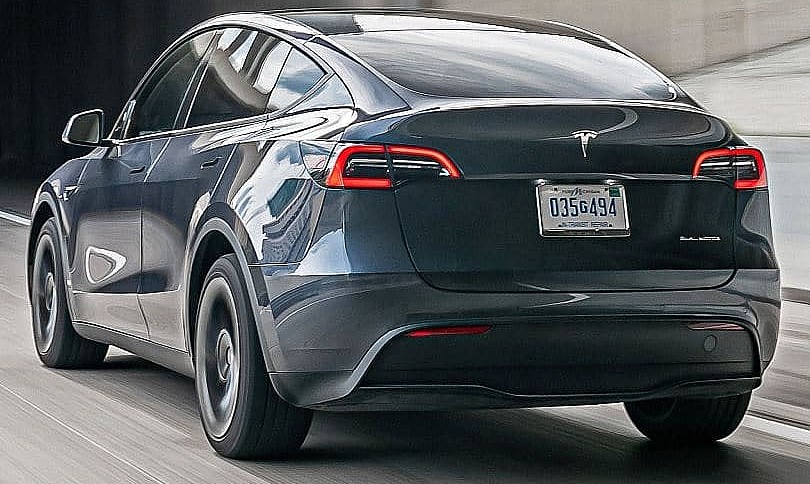
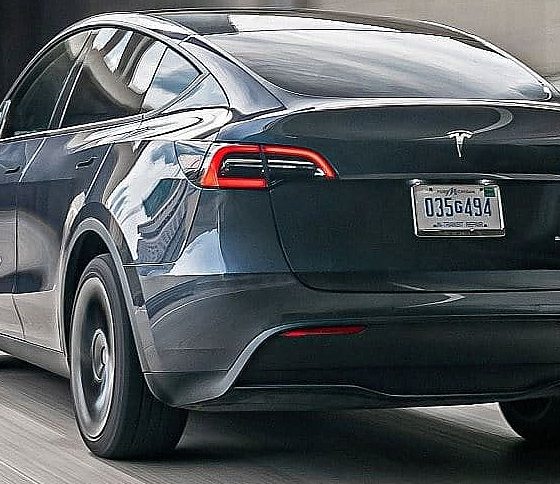
News
Tesla Model Ys without radar equip several changes to improve Autopilot performance
Tesla is delivering new Model Y vehicles without radar, and the vehicles are equipping several relatively unknown changes when it comes to the overall operation. The changes are making the vehicle’s functionality perform differently, and it seems to be more robust and for the better, according to owners.
A new video from Tesla owners/enthusiasts DaErik shows the subtle but very noticeable changes in the Model Y, now that Tesla has started delivering vehicles without radar. For those who aren’t familiar, Tesla has long set out to eliminate radar from its vehicles in favor of a completely camera-based approach called “Tesla Vision.” Recently, Tesla announced that from May 2021 on, Model 3 and Model Y vehicles would no longer equip radar. Model S and Model X cars will still have radar for the time being, but it will eventually be removed from these vehicles as well.
DaErik met up with several friends who just took delivery of a new Model Y. For more comprehensive comparison optics, the friends compared Tesla Autopilot’s performance in the new, radar-less Model Y to the other Model Y they own, which does have radar installed. The differences in the overall performance of Autopilot were great. The new owners said that the Model Y without radar seemed to not only drive more confidently, but the overall performance of Autopilot was considerably and noticeably more precise and less timid than it was previously. This is a good sign and should alleviate worries from plenty of potential owners who were skeptical of Tesla’s removal of the radar and camera-based system in its vehicles.
The Model Y wouldn’t travel past 75 MPH on Autopilot, a detail that the company outlined in its blog post that announced the introduction to “Tesla Vision.” However, Auto High Beams must be turned on to utilize Autopilot now. This makes sense because, for the vehicle to have the best vision possible after radar was removed, high beams will provide the new, vision-based vehicles with more visibility in dark environments.
Tesla Autopilot will now prompt the driver to turn Auto High Beams back on to utilize the semi-autonomous driving functionality. (Credit: DaErik | YouTube)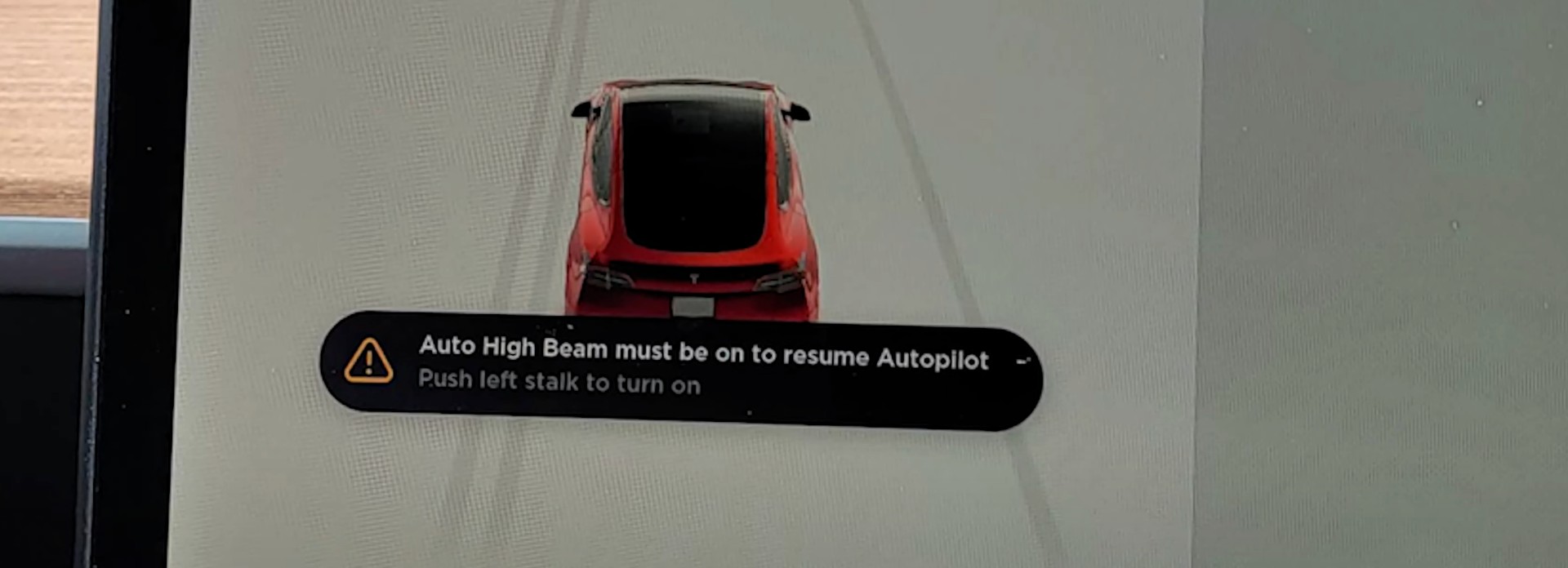
Additionally, new windshield wiper nozzles seem to be available on the radar-less Model Y. DaErik notes that his Model Y isn’t necessarily the most impressive when it comes to windshield washer fluid coverage, and several areas remain untouched or dirty. However, the new Model Y seems to have more washer jets that spray the fluid onto the windshield, making the glass cleaner and providing better visibility for the driver. This is certainly advantageous to those who drive in challenging weather conditions, especially snow.
The new 2021 Model Y also has the double-paned glass that Tesla has installed onto the Model 3. This feature helps deafen road-noise, adds additional stability for air circulation by keeping air within the car, and provides additional strength to all windows in the vehicle. In addition, Tesla also added Auto-Dimming Side Mirrors to the new Model Y.
There are also some changes to the taillights on the car, with the new Model Y having more visible, amber-colored brake lights and more precise reverse lights, as seen below.
- 2021 Model Y [Top] compared to 2020 Model Y [Bottom]. (Credit: DaErik | YouTube)
- (Credit: DaErik | YouTube)
Tesla obviously had to make several changes as it phased out radar from its two mass-market vehicles. The most obvious change is the Auto High Beam option that Tesla has made a requirement for Autopilot operation, but the several other changes also show that Tesla is planning to make any changes possible to make its all-electric crossover more well-rounded for future deliveries.
Watch DaErik’s full video explaining the Model Y’s new changes as Tesla phases out radar from its all-electric crossover below.

News
Tesla FSD fleet is nearing 7 billion total miles, including 2.5 billion city miles
As can be seen on Tesla’s official FSD webpage, vehicles equipped with the system have now navigated over 6.99 billion miles.

Tesla’s Full Self-Driving (Supervised) fleet is closing in on almost 7 billion total miles driven, as per data posted by the company on its official FSD webpage.
These figures hint at the massive scale of data fueling Tesla’s rapid FSD improvements, which have been quite notable as of late.
FSD mileage milestones
As can be seen on Tesla’s official FSD webpage, vehicles equipped with the system have now navigated over 6.99 billion miles. Tesla owner and avid FSD tester Whole Mars Catalog also shared a screenshot indicating that from the nearly 7 billion miles traveled by the FSD fleet, more than 2.5 billion miles were driven inside cities.
City miles are particularly valuable for complex urban scenarios like unprotected turns, pedestrian interactions, and traffic lights. This is also the difference-maker for FSD, as only complex solutions, such as Waymo’s self-driving taxis, operate similarly on inner-city streets. And even then, incidents such as the San Francisco blackouts have proven challenging for sensor-rich vehicles like Waymos.
Tesla’s data edge
Tesla has a number of advantages in the autonomous vehicle sector, one of which is the size of its fleet and the number of vehicles training FSD on real-world roads. Tesla’s nearly 7 billion FSD miles then allow the company to roll out updates that make its vehicles behave like they are being driven by experienced drivers, even if they are operating on their own.
So notable are Tesla’s improvements to FSD that NVIDIA Director of Robotics Jim Fan, after experiencing FSD v14, noted that the system is the first AI that passes what he described as a “Physical Turing Test.”
“Despite knowing exactly how robot learning works, I still find it magical watching the steering wheel turn by itself. First it feels surreal, next it becomes routine. Then, like the smartphone, taking it away actively hurts. This is how humanity gets rewired and glued to god-like technologies,” Fan wrote in a post on X.
News
Tesla starts showing how FSD will change lives in Europe
Local officials tested the system on narrow country roads and were impressed by FSD’s smooth, human-like driving, with some calling the service a game-changer for everyday life in areas that are far from urban centers.

Tesla has launched Europe’s first public shuttle service using Full Self-Driving (Supervised) in the rural Eifelkreis Bitburg-Prüm region of Germany, demonstrating how the technology can restore independence and mobility for people who struggle with limited transport options.
Local officials tested the system on narrow country roads and were impressed by FSD’s smooth, human-like driving, with some calling the service a game-changer for everyday life in areas that are far from urban centers.
Officials see real impact on rural residents
Arzfeld Mayor Johannes Kuhl and District Administrator Andreas Kruppert personally tested the Tesla shuttle service. This allowed them to see just how well FSD navigated winding lanes and rural roads confidently. Kruppert said, “Autonomous driving sounds like science fiction to many, but we simply see here that it works totally well in rural regions too.” Kuhl, for his part, also noted that FSD “feels like a very experienced driver.”
The pilot complements the area’s “Citizen Bus” program, which provides on-demand rides for elderly residents who can no longer drive themselves. Tesla Europe shared a video of a demonstration of the service, highlighting how FSD gives people their freedom back, even in places where public transport is not as prevalent.
What the Ministry for Economic Affairs and Transport says
Rhineland-Palatinate’s Minister Daniela Schmitt supported the project, praising the collaboration that made this “first of its kind in Europe” possible. As per the ministry, the rural rollout for the service shows FSD’s potential beyond major cities, and it delivers tangible benefits like grocery runs, doctor visits, and social connections for isolated residents.
“Reliable and flexible mobility is especially vital in rural areas. With the launch of a shuttle service using self-driving vehicles (FSD supervised) by Tesla in the Eifelkreis Bitburg-Prüm, an innovative pilot project is now getting underway that complements local community bus services. It is the first project of its kind in Europe.
“The result is a real gain for rural mobility: greater accessibility, more flexibility and tangible benefits for everyday life. A strong signal for innovation, cooperation and future-oriented mobility beyond urban centers,” the ministry wrote in a LinkedIn post.
News
Tesla China quietly posts Robotaxi-related job listing
Tesla China is currently seeking a Low Voltage Electrical Engineer to work on circuit board design for the company’s autonomous vehicles.

Tesla has posted a new job listing in Shanghai explicitly tied to its Robotaxi program, fueling speculation that the company is preparing to launch its dedicated autonomous ride-hailing service in China.
As noted in the listing, Tesla China is currently seeking a Low Voltage Electrical Engineer to work on circuit board design for the company’s autonomous vehicles.
Robotaxi-specific role
The listing, which was shared on social media platform X by industry watcher @tslaming, suggested that Tesla China is looking to fill the role urgently. The job listing itself specifically mentions that the person hired for the role will be working on the Low Voltage Hardware team, which would design the circuit boards that would serve as the nervous system of the Robotaxi.
Key tasks for the role, as indicated in the job listing, include collaboration with PCB layout, firmware, mechanical, program management, and validation teams, among other responsibilities. The role is based in Shanghai.
China Robotaxi launch
China represents a massive potential market for robotaxis, with its dense urban centers and supportive policies in select cities. Tesla has limited permission to roll out FSD in the country, though despite this, its vehicles have been hailed as among the best in the market when it comes to autonomous features. So far, at least, it appears that China supports Tesla’s FSD and Robotaxi rollout.
This was hinted at in November, when Tesla brought the Cybercab to the 8th China International Import Expo (CIIE) in Shanghai, marking the first time that the autonomous two-seater was brought to the Asia-Pacific region. The vehicle, despite not having a release date in China, received a significant amount of interest among the event’s attendees.
